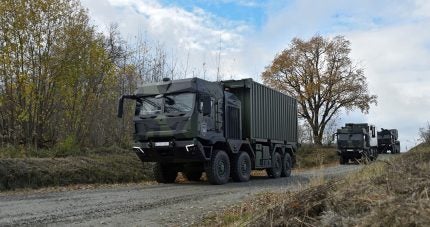
American Rheinmetall Vehicles (AMV), a Rheinmetall subisidary based in Michigan, and the Washington-based GM Defense (GMD) have successfully delivered three prototype trucks for the first phase of the US Army’s CTT programme.
The two companies formed a strategic collaboration in 2022 to compete in the programme.
On 27 January 2023, the Army announced four Other Transaction Authority (OTA) agreements to Mack Defense, Navistar Defense, Oshkosh Defense, and the AMV/GMD team totaling $24.25m.
The contractors will provide three prototypes of each variant for the CTT family of vehicles.
CTT will replace the existing M915 Line Haul Tractor and M1088 Medium Tractor; palletised load system; and heavy expanded mobility tactical truck; leveraging best commercial practices, lower procurement cost (commercial economies of scale) and technology.
The aim of the multi-phased programme is to replace the Army’s family of heavy tactical trucks, with production of up to 40,000 trucks valued at up to $14bn.
The team’s offering, the HX3 CTT, is the latest generation of trucks in the HX family. These are a range of purpose-designed military vehicles equipped with a multitude of protection capabilities that can carry out a range of missions. Recently, the British Army announced its plan to acquire 500 HX MAN vehicles.
The HX3 CTT is a next generation vehicle that has enhanced on and off-road mobility, integrated survivability and enabled for autonomous vehicle operation.
Combined with the digital open architecture, the commercial backbone of the HX3 CTT will support persistent modernisation and allow for rapid increases in capability as technologies mature, to include robotic and autonomous operations.
Rheinmetall has sold HX trucks to 20 customers globally including US allied users including Australia, Austria, Denmark, Germany, New Zealand, Norway, Sweden, and the UK creating common global supply chains.
HX provides an off-the-shelf capability as part of a commercial backbone that reduces obsolescence risk and cost, expands parts availability and reduces sustainment demands.
Evaluation of the initial delivered prototypes is due to begin this year.
Using the results from the prototype evaluation, the programme office, in conjunction with the Army’s Sustainment requirements community, will present the subsequent Capabilities Development Document to the Army Requirements Oversight Council with a decision expected in 2026.




